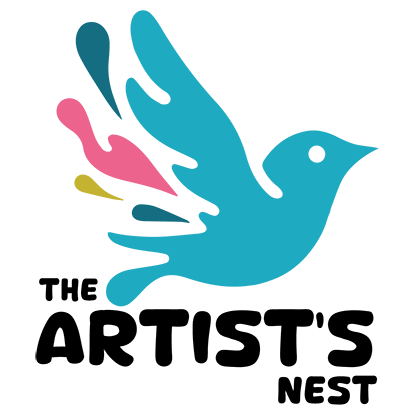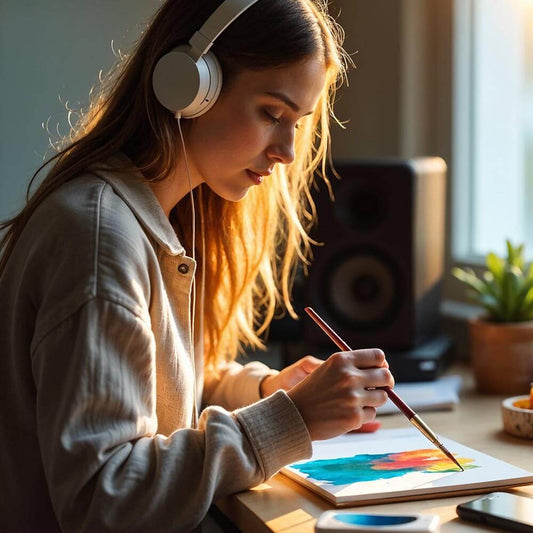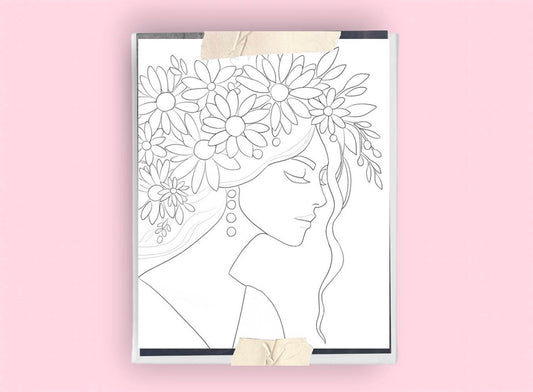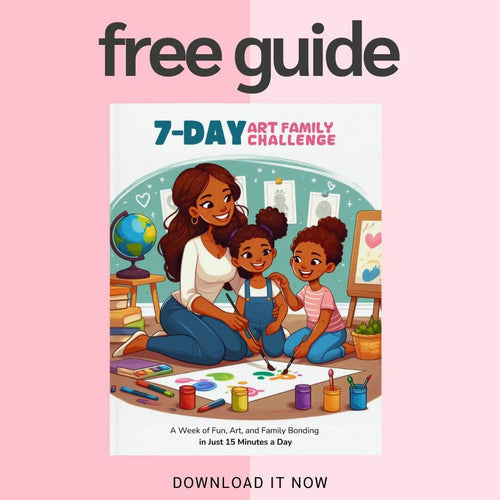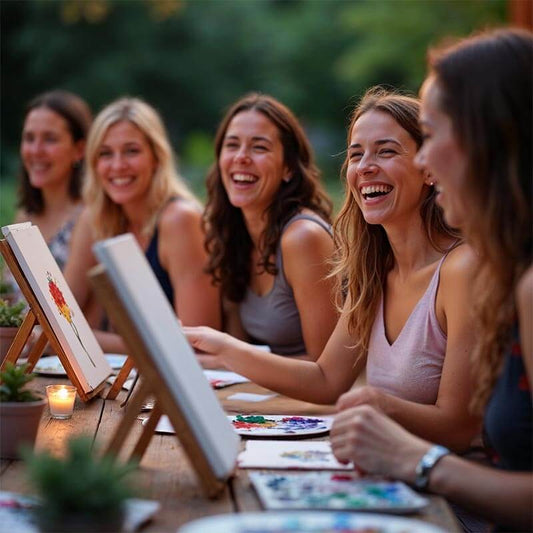Did you know that 1 in 5 adults in the US suffer from mental health problems? Unfortunately, I’m one of them, but that’s ok now because I’ve found so many healthy, constructive ways to cope. And today I’m happy to share one of them with you, please read on because it’s a fun one: therapeutic art-making. I’ll share 5 exercises that can help you ease anxiety and boost your mood today! But first, let me explain what therapeutic art is and what it’s not.
Therapeutic Art-Making vs. Art Therapy
At first, I thought “Art Therapy” just meant relaxing with art—painting a flower and unwinding at home. But I quickly learned that art therapy is a formal practice led by a licensed therapist who helps people process emotions and mental health challenges through guided creative exercises. It’s not about making pretty art but using it as a tool for healing.
Therapeutic art-making, on the other hand, is something anyone can do. No training, no rules—just a creative way to manage stress and express emotions. While it’s a great self-care tool, it’s not a replacement for professional help. But if you're looking for a simple way to relax and boost your mood, these exercises are a great place to start!
Exploring Therapeutic Art-Making: Five Practical Exercises
Now it’s finally time to try therapeutic art-making—no matter your experience, it’s a simple, accessible way to find a bit of calm in your day. It doesn’t take much—just a sketchpad, some pencils or markers, and a little time. The best part? You can do it on your own, in your own space, and let the process guide you into the present moment.
It’s not about being perfect; it’s about giving yourself permission to create and enjoy. I promise, once you start, you’ll feel the difference. So grab some supplies and let’s get started!
1. Mindful Doodling

Doodling may seem too simple to make a difference, but it can be a surprisingly powerful way to calm the mind. Here’s how to get started:
• Gather any pen or pencil and a blank piece of paper.
• Set a timer for five to ten minutes.
• Begin drawing whatever feels natural—squiggles, circles, lines, or random shapes. The key is to keep your hand moving and let the process flow.
• If your mind wanders, gently bring your focus back to the act of drawing. Notice the way the pen moves, the sound of it against the paper, and the patterns that emerge.
This exercise helps shift your focus away from intrusive thoughts and provides a small pocket of calm in your day.
2. Color Your Mood

Colors can have a profound impact on our emotions. This exercise helps you tune into your feelings and express them visually:
• Pick a color that matches how you feel right now—blue for calm, red for frustration, yellow for hope.
• Using a marker, crayon, or paint, fill a section of your page with that color.
• Notice how using that color affects your mood. Some colors bring a sense of calm, while others help release tension.
• If you feel ready, choose another color that represents how you’d like to feel and add it to the page.
This exercise helps you connect with your emotions and can shift your mental state in a positive direction.
3. Music-Inspired Painting

Music and art are both powerful forms of expression. By combining them, you can create a deeply immersive experience:
• Choose a song that matches your mood—calming, upbeat, or mellow.
• Gather a brush and some paints (or markers if you don’t have paints).
• Start the music and let the rhythm guide your hand—paint lines, swirls, or splashes of color.
• Focus on translating sound into color and movement rather than on the final painting.
This exercise can help you release pent-up emotions and feel more present.
4. Pattern Mandalas

Mandalas, or circular designs filled with patterns, are often used in meditation. Creating one can be a soothing, repetitive activity:
• Draw a large circle on a blank sheet of paper.
• Divide the circle into sections.
• Fill each section with a pattern—dots, lines, spirals, or shapes.
• Work slowly and focus on the process.
By the time you finish, you’ll have a beautiful piece that reflects the calmness you cultivated while creating it.
5. Guided Templates

Starting with a blank page can feel overwhelming, but guided templates make it easy:
• Download my free printable templates for coloring or as guides to create your own pre-drawn canvas.
• Print them and start filling in the shapes with colors that reflect your mood.
• Use them to transfer designs onto a canvas for a painting project.
• Bonus: One template includes a follow-along video tutorial with an art instructor!
Using a guided template takes away the guesswork, letting you focus on the relaxing, repetitive motion of coloring or painting.

Want more? Try a Vistas Guided Pre-Drawn Canvas, complete with step-by-step tutorials and A Mindful Art Journey guide to help you relax and enjoy every brushstroke!
Closing Thoughts: Be Gentle with Yourself
Therapeutic art-making isn’t about creating something perfect. It’s about giving yourself a safe space to explore emotions and find peace. Whether you’re doodling, painting to music, or using a guided template, art-making offers a comforting way to care for your mental health.
